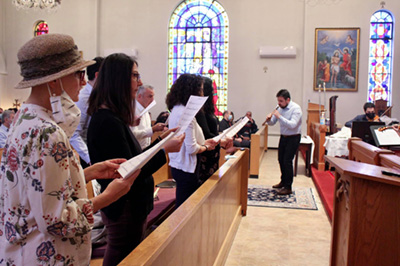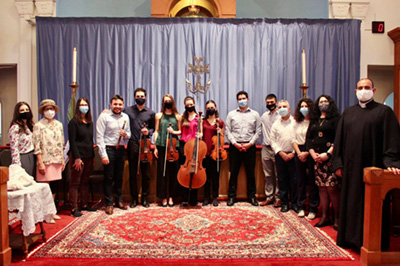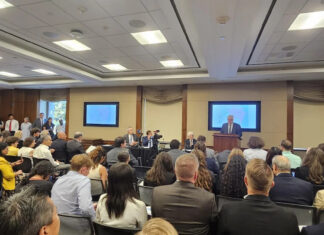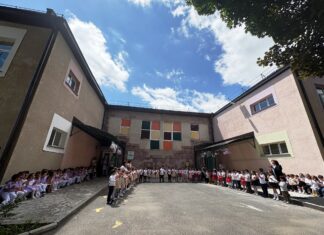CLEVELAND — The Covid-19 pandemic has been hard on everyone. Among those who found this time the most difficult have been religious communities whose member were not able to congregate in person, and musicians and music fans who have been unable to experience the joy of live performance, as well as the Armenian communities around the country which have not been able to come together to mutually support one another in the typical way during this time of need.
The “Songs of Hope” concert, offered on March 28 by St. Gregory of Narek Armenian Apostolic Church after this year’s Palm Sunday Divine Liturgy, took care of all three missing elements for many Cleveland-area Armenians.
Organized by Deacon Ari Terjanian, organist and choir director of the church, the purpose of the concert was in his words, “twofold — to give our community hope, and to encourage people to come back to church. It was also a way to celebrate Palm Sunday.”
In his opening remarks, Terjanian reflected on the “immensity” of the fact that those present were together in person. For most, he said, it was the first time they had been to church in a year; the first time they had seen their Armenian friends from the community as well as been able to find spiritual fulfillment in the church setting. For the musicians, it was the first time they had been able to perform for a live audience in a year, and for the audience, it was the first time in a year they had been able to hear live music. Terjanian noted that the purpose of the concert was to spiritually uplift the audience as well as promote Armenian culture. He added that while music has been available through the pandemic on streaming platforms and even streamed live performances, nothing can replace a live performance. Musical performance takes at least two people, he said – the player and the listener. The musician is stirred to greater heights by the responsiveness of the audience and the audience is inspired by listening to the music, which is the reason for playing in the first place.
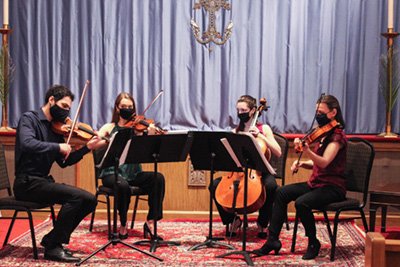
Terjanian stated in an interview that he was overwhelmed by the positive response when he first reached out to the performers. They all agreed to do the concert on a strictly charitable basis and only one person who was asked to play had to be replaced by a stand-in, which was only due to fears of public gathering on that individual’s part.
The star of the show was undoubtedly Mher Mnatsakanian of Boston, who is quickly becoming the most in-demand duduk player on the East Coast. He has a solid relationship with the Cleveland community and especially its pastor, Fr. Hrach Sargsyan, a fellow native of Armenia. Mnatsakanian had first come to Cleveland two years ago for a concert celebrating the 150th birthday of Komitas Vartabed, the day before he appeared in concert in Chicago. Recently he also participated in a New England area concert to raise funds for Artsakh. Another top notch performer was violinist Haig Hovsepian, also from Boston, but who has been living in Cleveland the past few years, where he is in his senior year at the Cleveland Institute of Music. Hovsepian has formed a group, the Almas Quartet, composed of fellow students with whom he performs in public and who performed with him on the 28th. (The quartet’s violist was unable to attend due to Covid-related concerns.) Those who performed were Emera Gurath, Violin; Claire Peyrebrune, Viola; and Lydia Rhea, Cello. (The Almas quartet also performed the following Wednesday in an AGBU-affiliated benefit concert for Artsakh and Armenia). Terjanian himself served as MC and accompanist on piano and organ, as well as performing a piece of his own. Finally, St. Gregory of Narek Church’s Narekatsi Choir joined the concert as “backup singers” on a few of the selections. The participating choir members were Maral Antonyan, Soprano; Naira Azatyan, Soprano; Louise Demirjian, Alto; Anita Arpajian, Alto; Serop Demirjian, Tenor and Peter Zahirsky, Bass.
